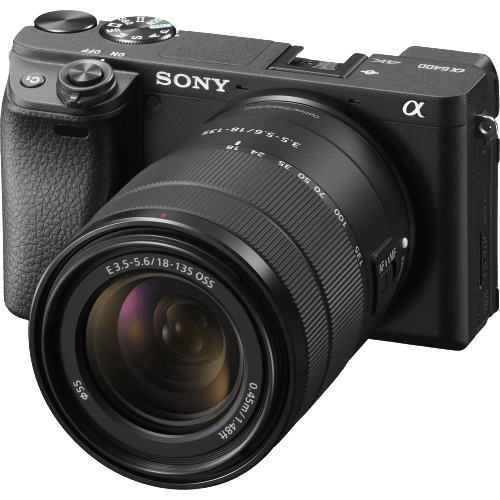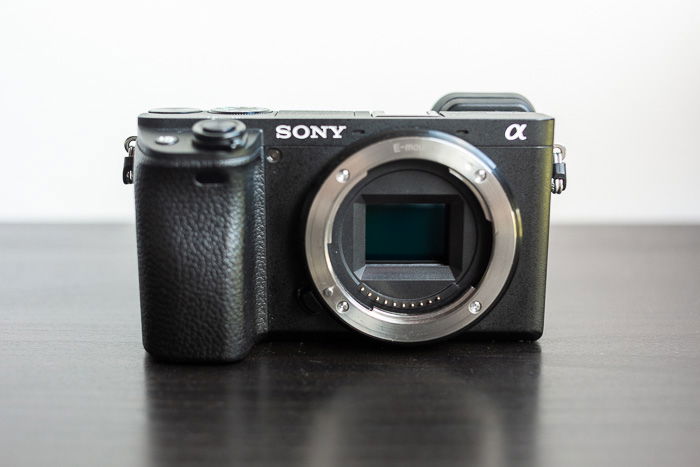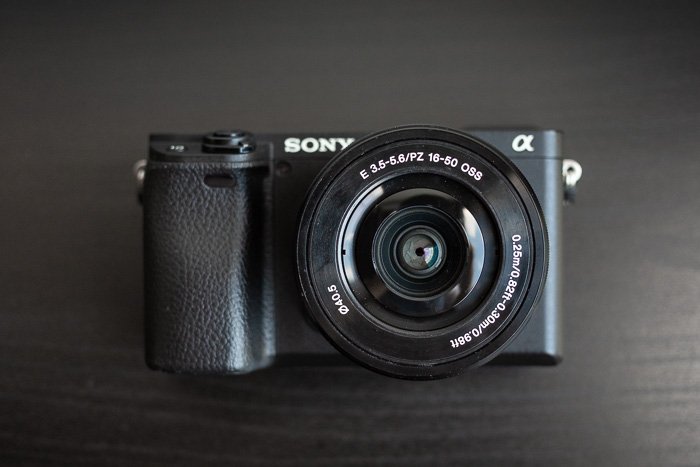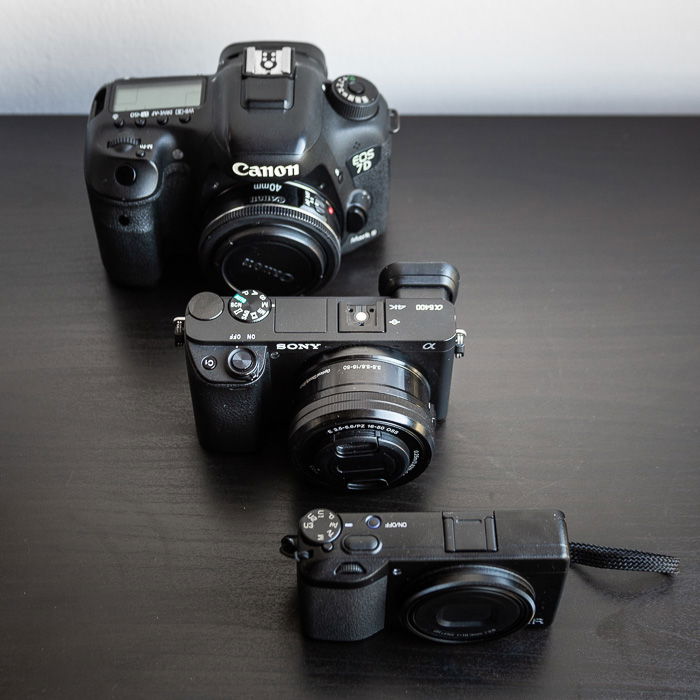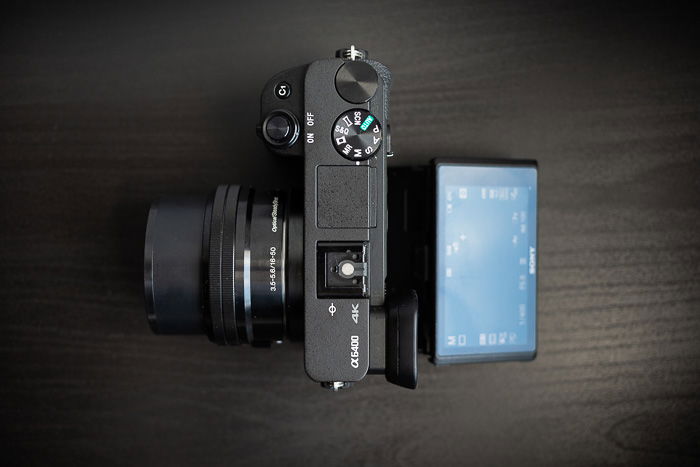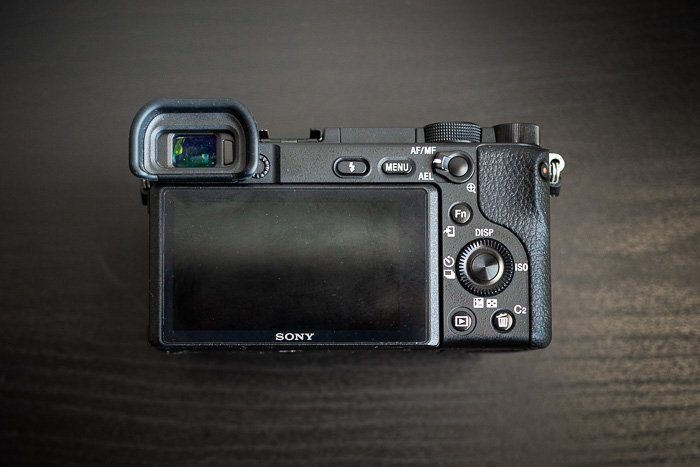In this review, we’ll be taking an in-depth look at the Sony a6400. We’ll test all the main features and functions. And by the end, you’ll know if the Sony a6400 is the right camera for you.
Sony a6400 Overview and Specifications
It has a durable, but small body, with good ergonomics for the most part. It also has some annoying design flaws. The A6400 is an interchangeable-lens camera. It has Sony’s E-mount, the most popular and versatile mirrorless mount to date. For this review, I got the 16-50 powerzoom kit lens, a cheap and decent lens.
Who Is the A6400 For?
Midrange interchangeable-lens cameras appeal to everyone. The A6400 is no different. Beginners like them, because they represent a significant step-up from entry-level models. For experienced casual shooters, they are an economical choice that offer many pro-level features. Professionals often use such devices as second/third backup cameras, or as their tool for shooting besides work. The most notable uses are casual shooting, street, travel, and documentary photography. It is useful for situations where you need a highly portable but capable camera. Paired with the right lenses, the A6400 is perhaps the best midrange camera for shooting sports, action, and wildlife in 2020. Its autofocus system is far ahead of the competition. It’s also very usable for video recording. If you’re a hybrid shooter, it should definitely be on your list. If you only record video, you have better options at this price point, mainly the Panasonic G9.
Key Features of the A6400
Let’s dive right into what separates the A6400 from its rivals, where it excels and where it lags behind.
Mount and Compatibility
The A6400, like all of Sony’s mirrorless cameras, is built around the E-mount. For years, Sony’s lens lineup for crop sensors had cavernous holes, most of which are now filled. In 2020, you have many choices, including budget and premium zooms for most focal ranges, and also several primes. But, there are also some key options missing, such as a midrange standard zoom. Third-party support for the E-mount is more extensive than for any other mirrorless mount. Manufacturers like Sigma and Tamron produce high-quality and affordable glass for the system. Smaller brands, such as Laowa or Irix make mostly premium lenses for very specific use cases. There are also fast, cheap lenses by brands like 7Artisans made purely to have fun with them. The E-mount has a very short flange distance of 18mm. You can read our detailed article here on what flange distance exactly is. This means that you can adapt lenses designed for non-mirrorless systems to any E-mount camera, including the A6400. There are reliable mount converters from EF and F-mounts to E-mount that transmit all electrical signals. This allows you to work with your Canon and Nikon DSLR lenses smoothly. But there are also “dummy” (non-electronic) adapters for almost every vintage lens mount. Without much doubt, Sony’s system is the most capable when it comes to adapting old glass to new cameras. Other mirrorless mounts are less popular, thus less supplied with adapters.
Sensor
The A6400 has a 24MP APS-C sensor made by Sony, the same as in the recently reviewed Ricoh GR III. In this camera body, it does have an optical anti-aliasing filter on the top to reduce moiré. This added layer introduces a slight softening effect for photos, but it’s a standard on Bayer-array sensors. It’s still an awesome sensor for stills and video alike. First of all, the pixel count of 24 million is plenty for basically any purpose. The 6000×4000 images are fine for heavy cropping or large printing if you use the right lenses and settings. Second, the dynamic range of this sensor is perhaps the best you can find in APS-C cameras today, although there are no huge differences. According to my not so scientific testing, I would put it around 13 stops. Its ISO performance is also among the best. It provides very clean images up to ISO 1600. Between 1600 and 12800, we see subtle increases in noise levels. Around the 25600, noise becomes too harsh for the images to be useable for most purposes. A feature that this sensor lacks is stabilization. None of the competitors of the A6400 actually have this. It would’ve been a nice addition nonetheless. Note that the shutter on the A6400 doesn’t close when the camera is off. The sensor is exposed to direct air, and thus dust.
Autofocus and Burst
The number one feature that makes the A6400 stand out in many respects is its autofocus system. It’s an on-sensor phase-detection system, a solution used in many modern mirrorless cameras. It pairs the speed of DSLRs with the accuracy of contrast detection. This results in very noticeable improvements over mirrorless cameras from a few years ago. 425 contrast-detect and 425 phase-detect focusing points cover the entire area of the sensor. Focus acquisition speed feels almost instantaneous at any of these points, whether it’s close to the center or not. Sony’s AI-trained autofocus technology also offers fantastic tracking capabilities. It can track almost any moving or static subject, even at high speed. It also detects eyes (human and animal alike) with unprecedented precision. Most eye-detection systems can pick up an eye only in close-up portrait scenarios. The A6400‘s system picks up eyes from full-body shots and keeps them in focus. Setting up the system exactly to your taste is a meticulous process. But once you’re done with that, it works like a charm and outperforms anything except Sony’s own higher-end models. The A6400 is capable of continuous shooting at 11fps with normal shutter, or 8fps with silent (electronic). With the electronic, be prepared to see a lot of rolling shutter artifacts – don’t shoot fast action with that turned on. Generally, the A6400‘s autofocus tracks very well even at 11fps burst, but it has two caveats. One is that during bursting, Sony cameras autofocus while the lens is stopped down. This can significantly impact speed if you’re using fairly slow apertures. For the best burst-tracking performance, use your lenses wide open or close to wide open. The other is that clearing the buffer takes a long time. Given that the A6400 is limited to UHS-I SD memory cards, writing speed is not able to keep up with the speed that 11 RAW files require. When the in-camera buffer fills up, transferring the shots to the card can take up to half a minute (full RAW) or a minute (best JPG + full RAW). During this time, you can’t shoot and can’t review images.
Video Features
The A6400 is a highly capable camera when it comes to video recording, albeit with a few flaws. It shoots 4K at 24/25/30 fps. At 30fps, there is a slight, 1.2x crop applied. It’s also capable of shooting FullHD at 120fps. All of these are at 8-bit, 4:2:0, which doesn’t promise a lot for excessive grading. The maximum bitrate is 100 Mbps at all settings. There is no limit on recording time, which is a great benefit. You’re only restricted by the size of your card, or the buffer. Nonetheless, there are still Log and HDR picture profiles included. Most of my experienced video shooter friends have recommended using the HLG 2 setting in 8-bit Sony cameras because of its high flexibility. A notorious issue of the A6400 is the prominent presence of rolling shutter artifacts. This is because the top and the bottom of the sensor are not read out at the same time, but at roughly 30 milliseconds apart. That is enough to cause serious bending when panned or a “jello” effect when digitally stabilised. There is a minor overheating issue, too, but it’s no more significant than in any other mirrorless camera of similar size. Autofocus in video mode is great, still the best in its class, although some Canon cameras are close.
Body and Handling
The A6400 body is made of a magnesium alloy, which makes it solid but lightweight. The grip is rubberised for better holding. It feels very sturdy. The exact sizes are 120mm x 67mm x 60 mm, and 403g with battery. Speaking of the grip, it looks small, but it’s actually quite comfortable. It helps that the shutter button is placed on it, and not behind it – that would’ve been detrimental to the ergonomics. A very welcome addition to the package is the weather-sealing. Sony claims that this camera is “moisture and dust” resistant, which means you can take it out into the rain without much concern. Be aware, though, that the kit lens is not weather-sealed. To gain full sealing, you have to use one of Sony’s higher-end lenses, or third-party weather-resistant lenses. A flip-up touchscreen occupies the larger part of the back. It’s accompanied by several function buttons, an AF/MF-AEL switch, the flash release button, a control dial, a mode dial, and a control wheel. Overall, the camera is highly customizable, more than perhaps any comparable model I’ve used. The electronic viewfinder is great, it’s large and responsive. Color and contrast are very usable out of the box. Battery life is quite decent, but nothing groundbreaking. During my testing, I drained a full battery in about 400 shots. Other reviewers have had similar or worse experiences. The camera is chargeable via micro-USB, or the battery can be charged separately with an adapter not included in the base package. A single UHS-I SD-card slot shares the slot with the battery. The tripod mount is placed quite far away from the combined battery/card door, so you can exchange those easily even when the camera is on a tripod. It’s placed in line with the center of the lens mount, so creating seamless panoramas is easy. There are some issues with the ergonomics of the controls on the A6400. The menu system is far from intuitive, with an infinite amount of pages and key settings scattered across those. Luckily, there’s a My Menu section where you can put 30 of the most important settings. Another problem with Sony is the terrible integration of the touchscreen. The only action you can use the touchscreen for is setting your focus area. You can’t change settings, navigate in the menus of review images with it. This is not the first or second generation of touchscreen cameras from Sony. There’s no excuse for such poor touch access.
Image Quality Out of the Box
A well-known accusation against Sony is that the default color calibration profiles are quite weak. Especially in comparison with Canon or Fujifilm. This is definitely true to an extent, but there are easy solutions. The first and most obvious is to shoot in RAW. But I respect that not everyone has the time to tweak their shots after the fact. There are options in the camera to change the color calibration to a degree. This won’t replace the versatility you have with RAW processing software, but much better than nothing. I’ve also found that default sharpening and noise reduction are too strong-handed. You can reduce these in the menu.
Alternatives
There are a number of alternatives to the Sony A6400. The Fujifilm X-T30 shares many traits, including a similar sensor and identical price. It stands out with its beautiful design and exceptional JPG and video quality. The Nikon Z50 is also a decent choice with great ergonomics and user experience. But the Z ecosystem lacks an extensive lens palette. The adaptation of F-mount lenses is not smooth at all. The Canon EOS M6 MkII has a 32MP sensor, a great autofocusing system (closest to the A6400). It also has surprisingly great ergonomics in a tiny body. Another Canon, the EOS RP has a full frame sensor. While there are few native RF lenses, the adaptation of EF lenses is possible without annoyances in AF speed or accuracy.
Our Verdict
The A6400 is a very versatile and high-quality camera with little drawbacks. Its issues can be annoying, but don’t impact everyday shooting much. I am fairly confident that the A6400 is the best you can get in the midrange mirrorless category. That said, I still have to do extended tests with the Canon M6 II and the Nikon Z50.
Scores
